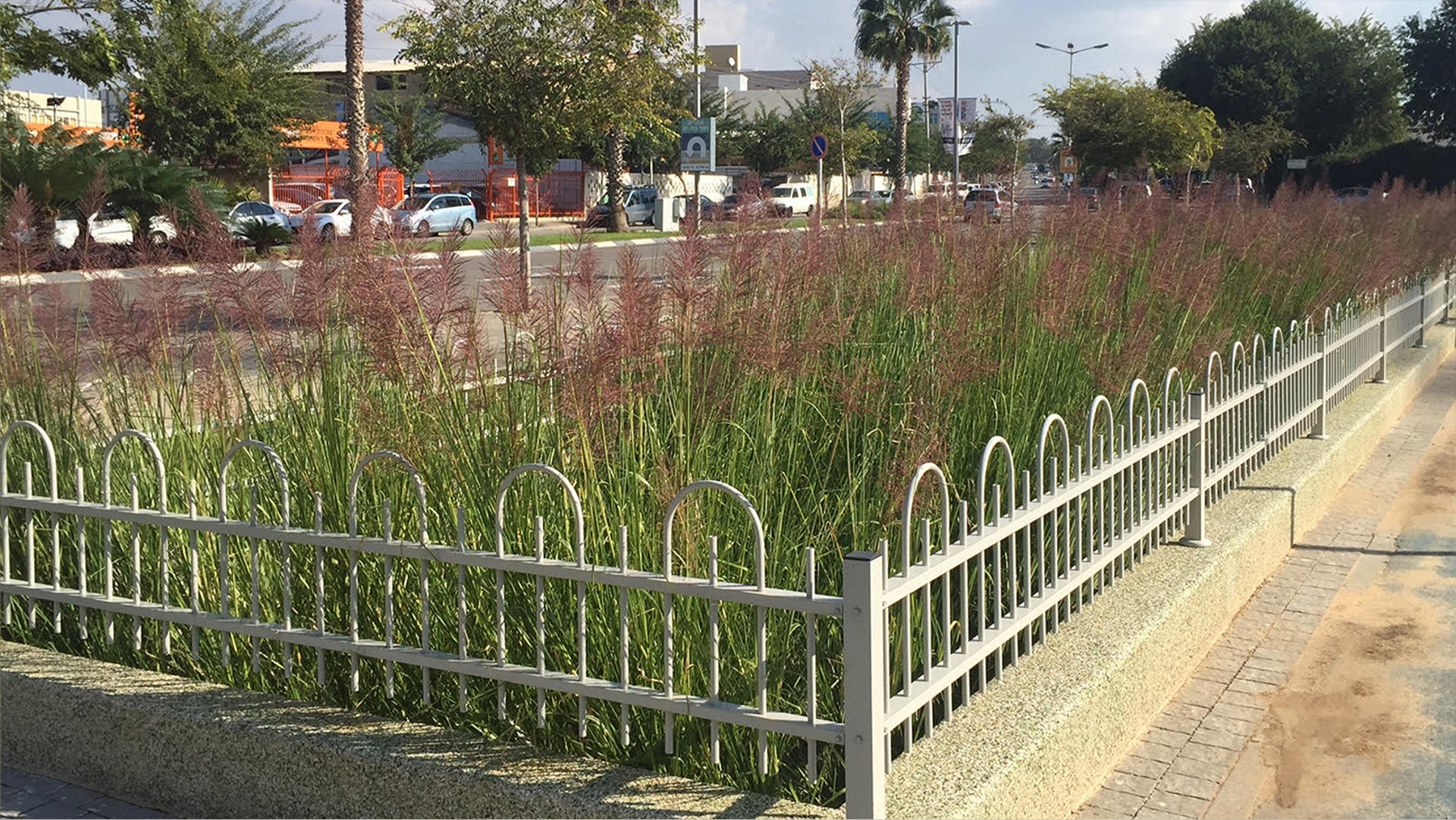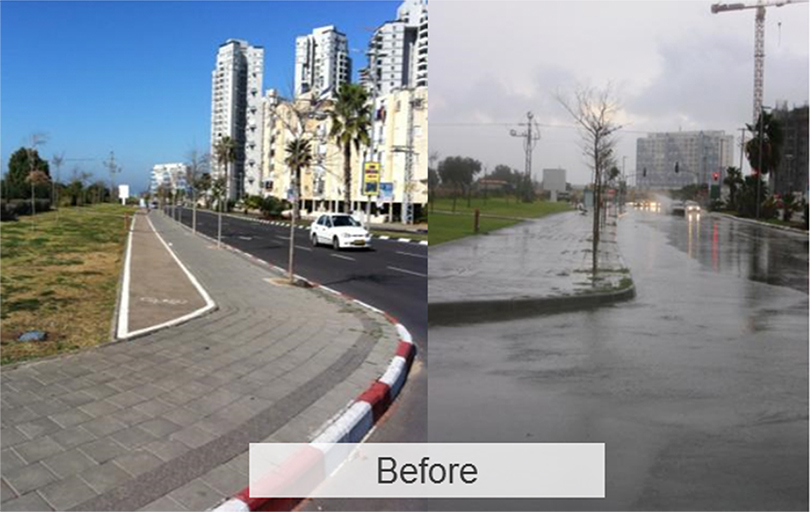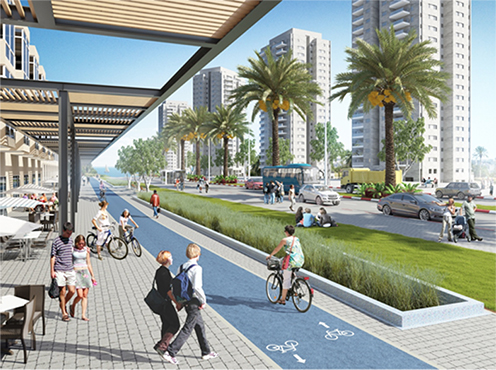The Biofilter Technology
The two technologies being tested – the biofilter system and the modular runoff retrieval technology – are based on three main stages:
1. Runoff collection
2. Detention and purification of the water
3. Recharge and/or infiltration into the groundwater
The Biofilter System
The system utilizes plants and bacteria combined with filter media to remove a range of stormwater pollutants. Purification is achieved by means of a chain of biological and physical processes in which the force of gravity is used to convey the water from one stage to the next, without the need of any expenditure of energy. The biofilter system has the outward appearance of an ordinary garden, and thus offers a pleasant green oasis amid the urban landscape.
Modular Technology for Runoff Recharge
The modular system is being tested in Israel for the first time. It is innovative and compact, and does not contain vegetation (and therefore does not need to be irrigated). It absorbs contaminants from polluted water using specially designed filter media. With its small footprint, the system can effectively harvest stormwater in places where drainage may be challenging, and is thus suitable for installation in areas lacking open public spaces. The system allows for and simple planning, and can be installed quickly and at low cost.
Both technologies are capable of efficiently removing serious pollutants from urban surface runoff, such as suspended solids, heavy metals, phosphates, nitrates, oil, fuel and pathogenic bacteria.
The treated water is collected into perforated pipes, installed at the base of the system, and from there it is channeled into a system of infiltration and recharge wells. The water can be conveyed into the groundwater by two methods, one by injecting the water directly into the groundwater, and one in which the water infiltrates down through the soil until it reaches the groundwater.
- Direct recharge, by means of an injection well at a depth of 15.5 meters (which is five meters below the groundwater level).
- Infiltration, by means of a wide infiltration well (one meter in diameter) at a depth of ten meters, which allows the water to penetrate unsaturated areas of soil, providing an additional stage of filtration and water treatment.













